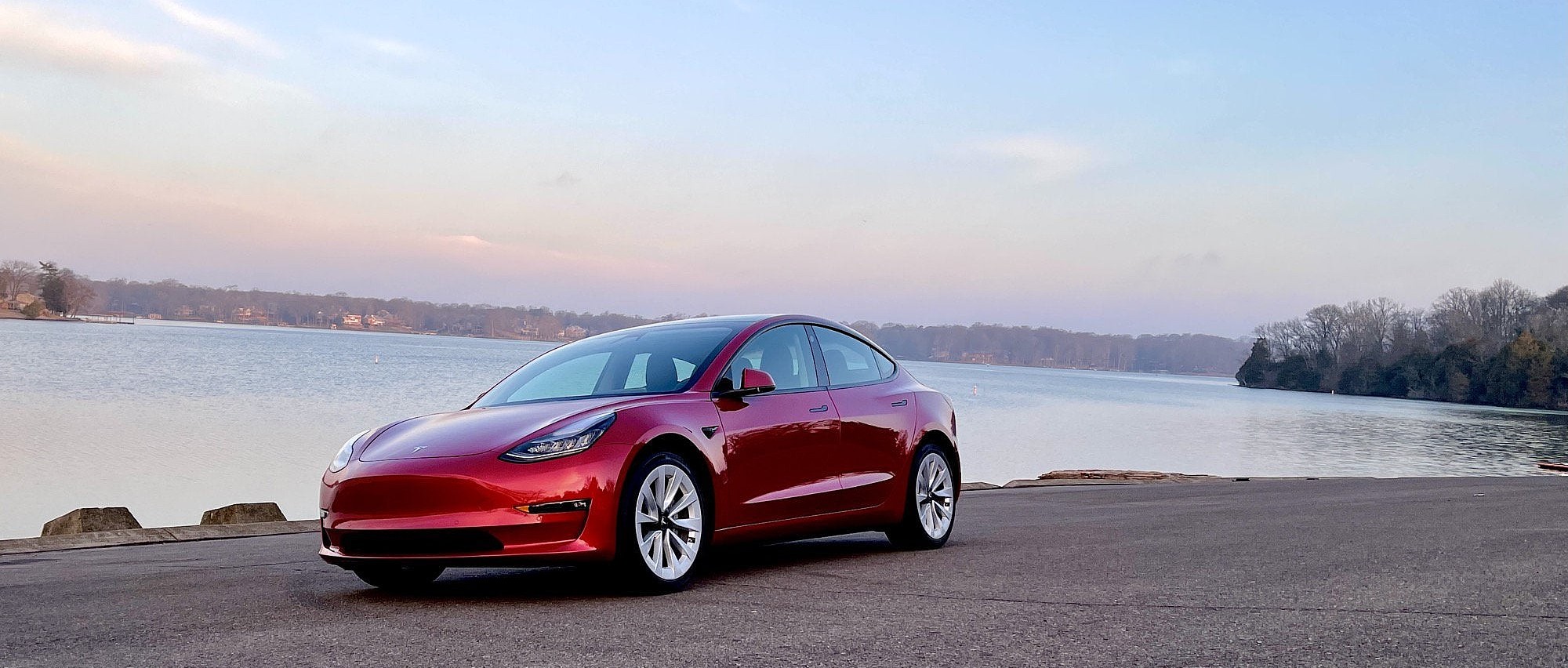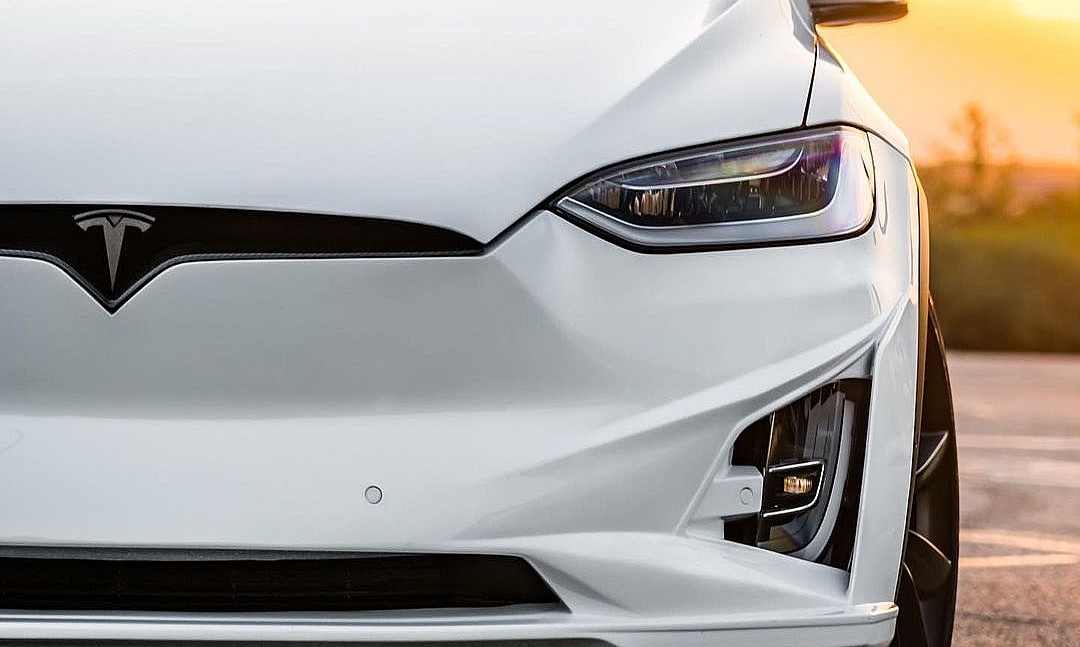

News
Tesla to dominate 2021, but other winners and losers in EVs to be determined
It is no secret that Tesla is expected to dominate 2021’s electric vehicle market as the company begins to show it has the robust nature it takes to grow in such a competitive market. After delivering just shy of 500,000 vehicles, according to its own Shareholder Deck via its Investor Relations website, Tesla is poised to increase that number even more this year, especially as two new Gigafactories are expected to take shape and begin rolling out EVs later this year.
Tesla’s undeniable dominance in the EV sector has been accredited to several things: hard work, strategy, luck, and seeing that EVs would be the future well before anyone really knew. Tesla has truly caused an entire industry to rethink its future strategies regarding the development of its products. Instead of slight revisions to an ICE model that has been in production for 40 years, automakers are scrapping the old-faithful vehicles that once ruled production processes for all-electric cars that are supplying the world’s brightest engineers and manufacturing experts with constant headaches.
But past the overwhelming importance for automakers to adopt EV strategies moving forward, 2021 will likely be a “make or break” year for some of the biggest names in vehicle production. While there are undoubtedly going to be winners who will join Tesla on the upward trend toward EV adoption, there are others that will fade away. Unfortunately, there is no way to look into the future and see who will win and who will lose, but the writing that currently appears on the wall will tell many investors of the EV movement who is making a commendable effort of trying to adopt new strategies and move toward sustainable transport. However, others are still stuck with the notion that there is time. However, the longer these companies wait, the further the lead will be for Tesla, who once sat in the shadows of automotive legacy, waiting for its chance to pounce.
Credit: teslaphotographer/Instagram
Deutsche Bank analyst Emmanuel Rosner upped his price target on Tesla stock on Thursday from $705 to $890, The Street reported. After already upgrading Tesla’s outlook once in 2021, Rosner is still convinced of the automaker’s dominance moving forward, looking at 2021 as the year of the EV.
But it’s not all bright-eyed and bushy-tailed for Rosner because he believes that some automakers will eventually phase themselves out of the race to EV dominance. Although nearly every company in the world that makes cars has mentioned a possible adoption to electric transport, there are still some that sit with very vague plans. Interestingly, these companies claim that Tesla will eventually fall and that scalability and software will only last so long. Sure, but Tesla has software nearly perfected, while some of the most robust and refined companies in the world are still stuck with head-scratching as their only outlet to vent their frustration.
Rosner’s note says that 2021 “should indeed see a material acceleration of electric vehicle roll-outs, and provide much clarity on winners and losers from electrification.” It’s true. We will see more EV plans this year than ever before. Companies like Rivian and Lucid plan to launch their first deliveries later this year, Tesla will be opening Giga Berlin and Giga Texas, only increasing production outputs from the automaker, and Ford will eventually begin rolling out Mach-E models after an unexpected delay of hundreds of models. But as most of us know, there is a fine line between launching a product and launching a product successfully.
What will 2021 entail for the EV sector? Mostly good things if you believe that President Joe Biden will replace an emphasis on climate control and pollution reduction. The President reactivated the U.S.’ inclusion in the Paris Agreement yesterday, a move that will excite many of the environmentalists out there. EVs undoubtedly contribute to a cleaner world, but can automakers contribute to the global transition to sustainable passenger transport? Who will win and who will lose?
What do you think? Leave a comment down below. Got a tip? Email us at tips@teslarati.com or reach out to me at joey@teslarati.com.

Elon Musk
Elon Musk and Tesla AI Director share insights after empty driver seat Robotaxi rides
The executives’ unoccupied tests hint at the rapid progress of Tesla’s unsupervised Robotaxi efforts.

Tesla CEO Elon Musk and AI Director Ashok Elluswamy celebrated Christmas Eve by sharing personal experiences with Robotaxi vehicles that had no safety monitor or occupant in the driver’s seat. Musk described the system’s “perfect driving” around Austin, while Elluswamy posted video from the back seat, calling it “an amazing experience.”
The executives’ unoccupied tests hint at the rapid progress of Tesla’s unsupervised Robotaxi efforts.
Elon and Ashok’s firsthand Robotaxi insights
Prior to Musk and the Tesla AI Director’s posts, sightings of unmanned Teslas navigating public roads were widely shared on social media. One such vehicle was spotted in Austin, Texas, which Elon Musk acknowleged by stating that “Testing is underway with no occupants in the car.”
Based on his Christmas Eve post, Musk seemed to have tested an unmanned Tesla himself. “A Tesla with no safety monitor in the car and me sitting in the passenger seat took me all around Austin on Sunday with perfect driving,” Musk wrote in his post.
Elluswamy responded with a 2-minute video showing himself in the rear of an unmanned Tesla. The video featured the vehicle’s empty front seats, as well as its smooth handling through real-world traffic. He captioned his video with the words, “It’s an amazing experience!”
Towards Unsupervised operations
During an xAI Hackathon earlier this month, Elon Musk mentioned that Tesla owed be removing Safety Monitors from its Robotaxis in Austin in just three weeks. “Unsupervised is pretty much solved at this point. So there will be Tesla Robotaxis operating in Austin with no one in them. Not even anyone in the passenger seat in about three weeks,” he said. Musk echoed similar estimates at the 2025 Annual Shareholder Meeting and the Q3 2025 earnings call.
Considering the insights that were posted Musk and Elluswamy, it does appear that Tesla is working hard towards operating its Robotaxis with no safety monitors. This is quite impressive considering that the service was launched just earlier this year.
Elon Musk
Starlink passes 9 million active customers just weeks after hitting 8 million
The milestone highlights the accelerating growth of Starlink, which has now been adding over 20,000 new users per day.

SpaceX’s Starlink satellite internet service has continued its rapid global expansion, surpassing 9 million active customers just weeks after crossing the 8 million mark.
The milestone highlights the accelerating growth of Starlink, which has now been adding over 20,000 new users per day.
9 million customers
In a post on X, SpaceX stated that Starlink now serves over 9 million active users across 155 countries, territories, and markets. The company reached 8 million customers in early November, meaning it added roughly 1 million subscribers in under seven weeks, or about 21,275 new users on average per day.
“Starlink is connecting more than 9M active customers with high-speed internet across 155 countries, territories, and many other markets,” Starlink wrote in a post on its official X account. SpaceX President Gwynne Shotwell also celebrated the milestone on X. “A huge thank you to all of our customers and congrats to the Starlink team for such an incredible product,” she wrote.
That growth rate reflects both rising demand for broadband in underserved regions and Starlink’s expanding satellite constellation, which now includes more than 9,000 low-Earth-orbit satellites designed to deliver high-speed, low-latency internet worldwide.
Starlink’s momentum
Starlink’s momentum has been building up. SpaceX reported 4.6 million Starlink customers in December 2024, followed by 7 million by August 2025, and 8 million customers in November. Independent data also suggests Starlink usage is rising sharply, with Cloudflare reporting that global web traffic from Starlink users more than doubled in 2025, as noted in an Insider report.
Starlink’s momentum is increasingly tied to SpaceX’s broader financial outlook. Elon Musk has said the satellite network is “by far” the company’s largest revenue driver, and reports suggest SpaceX may be positioning itself for an initial public offering as soon as next year, with valuations estimated as high as $1.5 trillion. Musk has also suggested in the past that Starlink could have its own IPO in the future.
News
NVIDIA Director of Robotics: Tesla FSD v14 is the first AI to pass the “Physical Turing Test”
After testing FSD v14, Fan stated that his experience with FSD felt magical at first, but it soon started to feel like a routine.

NVIDIA Director of Robotics Jim Fan has praised Tesla’s Full Self-Driving (Supervised) v14 as the first AI to pass what he described as a “Physical Turing Test.”
After testing FSD v14, Fan stated that his experience with FSD felt magical at first, but it soon started to feel like a routine. And just like smartphones today, removing it now would “actively hurt.”
Jim Fan’s hands-on FSD v14 impressions
Fan, a leading researcher in embodied AI who is currently solving Physical AI at NVIDIA and spearheading the company’s Project GR00T initiative, noted that he actually was late to the Tesla game. He was, however, one of the first to try out FSD v14.
“I was very late to own a Tesla but among the earliest to try out FSD v14. It’s perhaps the first time I experience an AI that passes the Physical Turing Test: after a long day at work, you press a button, lay back, and couldn’t tell if a neural net or a human drove you home,” Fan wrote in a post on X.
Fan added: “Despite knowing exactly how robot learning works, I still find it magical watching the steering wheel turn by itself. First it feels surreal, next it becomes routine. Then, like the smartphone, taking it away actively hurts. This is how humanity gets rewired and glued to god-like technologies.”
The Physical Turing Test
The original Turing Test was conceived by Alan Turing in 1950, and it was aimed at determining if a machine could exhibit behavior that is equivalent to or indistinguishable from a human. By focusing on text-based conversations, the original Turing Test set a high bar for natural language processing and machine learning.
This test has been passed by today’s large language models. However, the capability to converse in a humanlike manner is a completely different challenge from performing real-world problem-solving or physical interactions. Thus, Fan introduced the Physical Turing Test, which challenges AI systems to demonstrate intelligence through physical actions.
Based on Fan’s comments, Tesla has demonstrated these intelligent physical actions with FSD v14. Elon Musk agreed with the NVIDIA executive, stating in a post on X that with FSD v14, “you can sense the sentience maturing.” Musk also praised Tesla AI, calling it the best “real-world AI” today.








